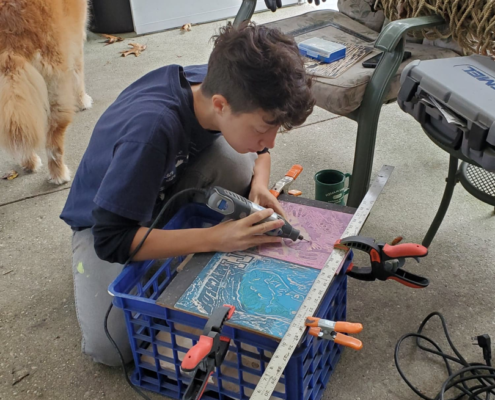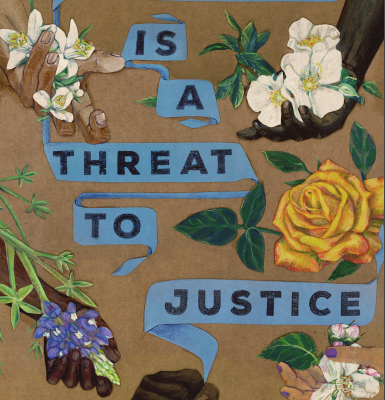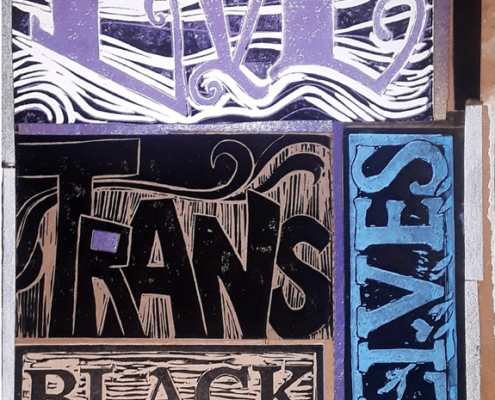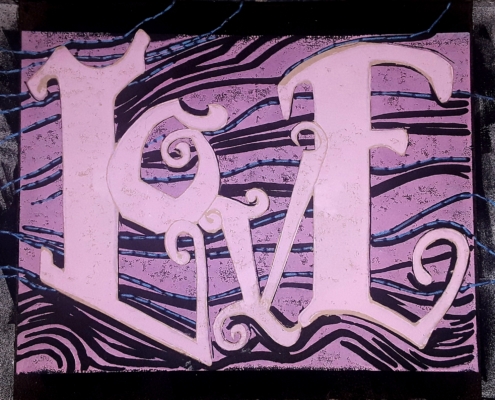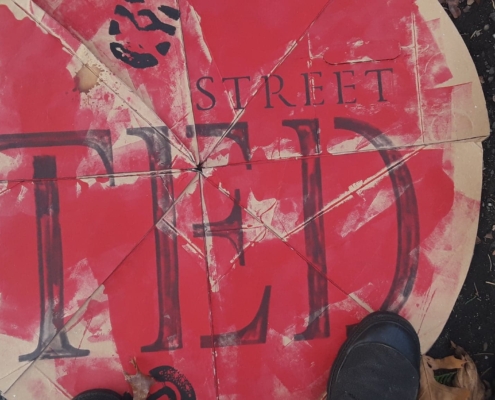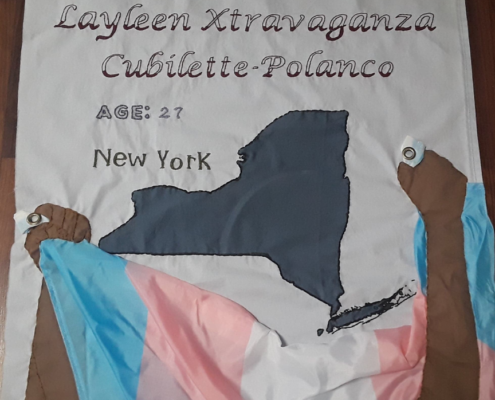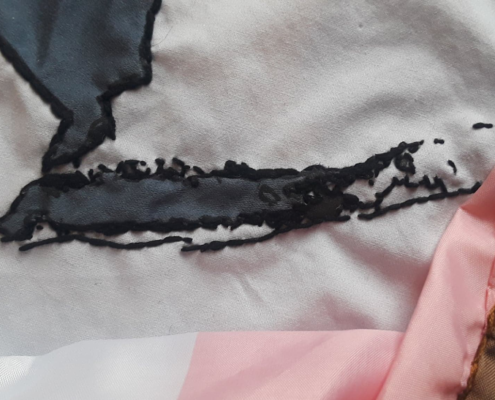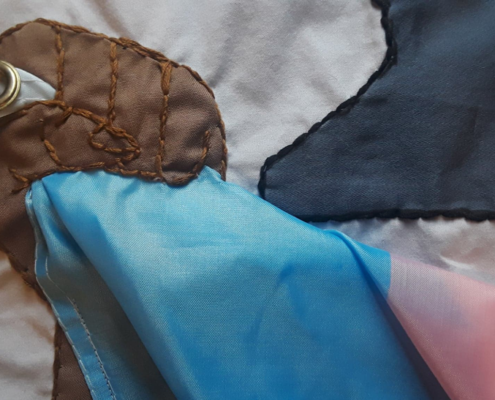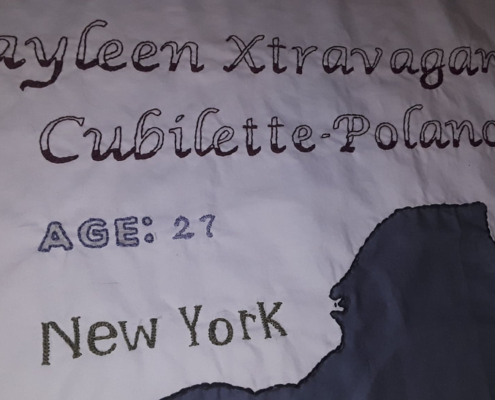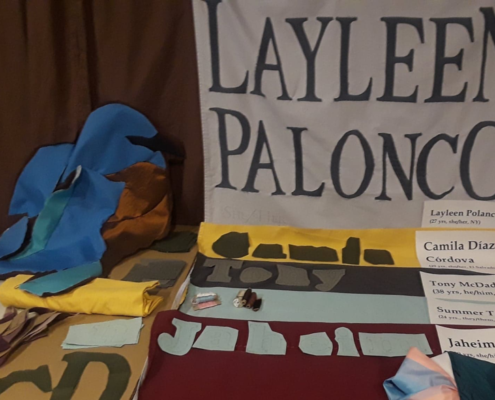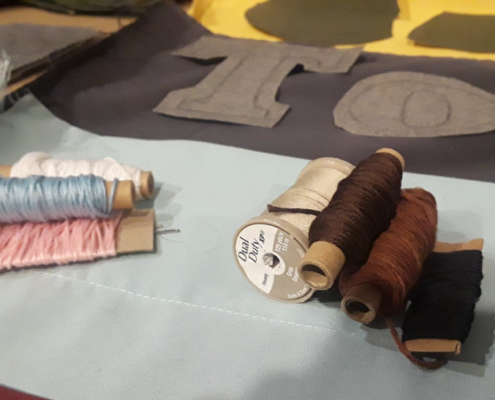Spotlight: A Pollicino (they/them)
Early in the semester, current SPQ student A Pollicino (they/them) was interviewed virtually. The interview is transcribed below! Read their bio here.
How does SPQ support your mission as a creator? What is the most important thing you’ve learned at SPQ so far?
Despite starting at SPQ during remote learning, the faculty and my classmates have enhanced my art practice. Though we are separated by COVID restrictions, the knowledge of SPQ faculty allows for rich discussion around critically thinking through the creation process. Being in a community with other students motivates me to push projects forward in directions I would not have come to on my own.
Tell me about your favorite work(s) created during your enrollment in SPQ, or that relates to your work in the program.
![AIDS quilt, Washington, D.C. Highsmith, Carol M, photographer. AIDS quilt, Washington, D.C. United States Washington D.C. Washington D.C. District of Columbia, None. [Between 1980 and 2006] Photograph. https://www.loc.gov/item/2011631696/.](https://www.socialpracticequeens.org/wp-content/uploads/2021/03/Pollicino-Interview.png)
My favorite work is still in research and developmental stages. At SPQ I am finally in a time and place of life where I can put critical thought and many hours into my practice. Aside from other work, I will utilize the resources and support SPQ is providing to develop a series of justice quilts inspired by activism-related quilts and banners. The AIDs memorial quilt perfectly embodies several core concepts I wish to incorporate in my process. This piece was used in activist and traditional exhibition spaces breaking the stigma around discussing a difficult topic merely by its visual presence. The project directly stemmed from the activism of its time, engaging folks not only in the creation process but in provoking advocates and opponents alike to discuss and think about what needed to be done. This sparked my idea to create a series of my own quilts based on victims of trans murders.
This quilt square was made for a youth-led, social justice group implementing a similar idea. The Social Justice Sewing Academy has a broader mission of memorializing and holding space for victims of police violence and other justice-related issues. I contributed this square not only to memorialize Layleen Polanco, who was a trans person who died due to neglect at Rikers Island but also to get a feel for engaging in a community practice. At SPQ faculty and classmates have helped me think through the nuance and effectiveness of various community engagement practices especially considering sensitive subject matter. This square also allowed me the opportunity to try various sewing techniques which is a new medium for me.
These are the basic beginnings of my series. The first few people I chose to memorialize are Layleen Polanco (she/her), Tony McDade (he/him), Camila Diaz Cordova (she/her), Jaheim Pugh (she/him), Summer Taylor (they/them). These people were chosen to facilitate conversation around varied trans identities and the intersections of identity and equity. As I research and witness each person’s story, folx at SPQ’s help me critically think about important elements of this project as far as representation, construction, aestheticization, counternarrative, and exhibition.
Which one of your works best represents your mission?
The series of justice quilts I started this past term sum up my main goals as an artist, educator, and trans community member. This group of memorial quilts will likely take the length of my time at SPQ. The project directly references community activist artwork created by my queer predecessors who constructed and utilized the AIDS Memorial Quilt to awaken the nation to the most pressing inequity of their time. These quilts reflect my efforts to continue that conversation bringing us to current day. Trans murders arguably mark the biggest challenge for the queer community today yet suffer from continued misrepresentation and lack of understanding. At SPQ I am encouraged by faculty support and the comradery of classmates to critically conceptualize the creation and use of this series.
What should I highlight about your work?
Most of my work is in progress and should be viewed in context of conversations around various topics (gender identity, racial justice, social inequality, etc.). My work is constantly shifting to practically fit into an activist, educational, and conversational space. Although I strive for a level of craftsmanship and aesthetics, the main purpose of my work is to facilitate critical thought around specific issues. My background as an educator seeps into most of my practice, creating mainly from a place of wanting to listen, learn, and teach.
You mentioned your current artwork is influenced by education organizing, what does educational organizing look like for you?
Educational organizing starts with listening. Artists are often trained to observe and analyze surroundings to understand and recontextualize existing realities. Activism and education have pushed me to listen and reflect on what is happening in the current justice moment, contextualize this moment with the past, and devise what we can facilitate to promote positivity in the future. Art can be a vehicle for practicing radical love in justice movements. Sometimes this looks like marching/kneeling/laying down with others, creating signs and banners, or hosting educational programming on specific topics. In all these actions people tell you what they are thinking, what they need, and what their hopes are. To me educational organizing looks like witnessing and connecting the dots for people who are moving toward common goals for justice.
Is there anything you want me to know about you?
I am committed long term to the pursuit of learning and justice. This being strongly galvanized by the inequities of the time I grew up in, as well as the realization of my personal identity and the identity of others being so thoroughly misrepresented. My work will continue to reflect coming to terms with the fact that we live in a time where the most equitable human existence is possible, while simultaneously the starkest inequity defines many people’s daily experience. Like many, I am as awake as I have ever been personally, intellectually, and politically. My goal now is to join with others and decide what we can revolutionize with the time, lens, and opportunity we have been given.
We thank A Pollicino for their thoughtful and insightful answers!

